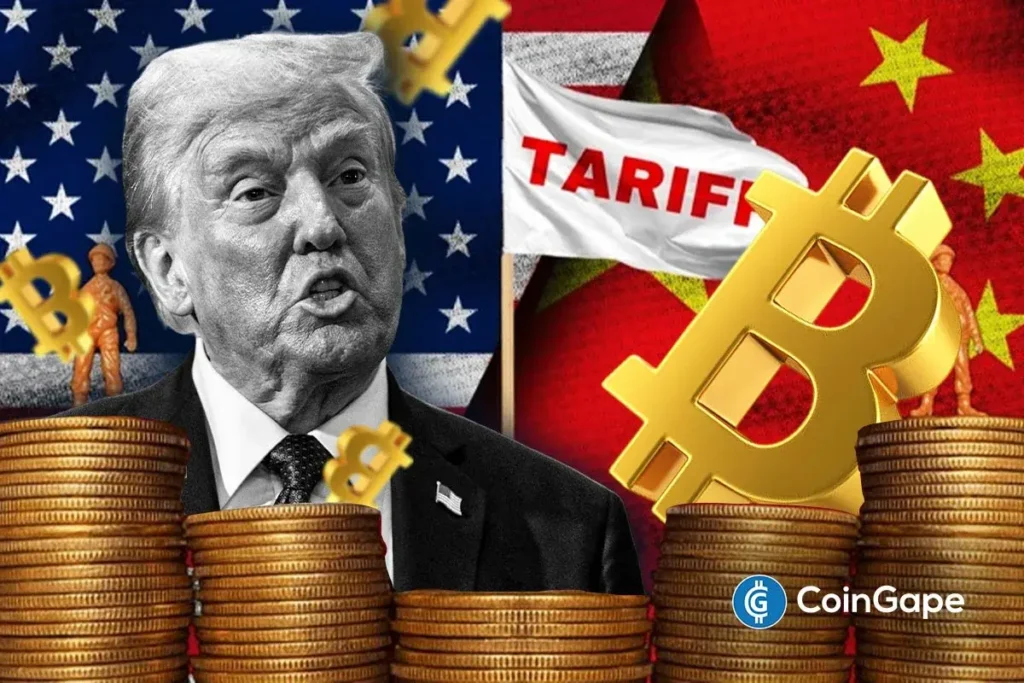Trump Insider Whale Increases BTC Short Bets Amid Geopolitical Tensions
In recent market developments, the so-called "Trump insider whale" has intensified their bearish stance on Bitcoin (BTC) by amassing an additional 200 BTC, valued at approximately $22.1 million. This strategic move raises their total short position to 900 BTC, equivalent to roughly $99.6 million. Notably, this trading maneuver comes at a time of heightened geopolitical tensions, particularly involving the United States and China, along with a newly forged cooperation agreement between the U.S. and Australia aimed at countering China’s dominance in critical minerals and trade.
Market Trends: Trump Insider Whale’s Trading Strategy
The data indicates that this influential trader’s current entry price stands at $109,521, with a liquidation threshold located around $141,072. Presently, the trader is facing a floating loss exceeding $1.1 million, showcasing the high-risk nature of their investments. This latest addition follows a sizable $76 million short bet made just the previous week, accumulating a staggering total exposure of more than 3,400 BTC across the trader’s ventures. The whale is believed to have profited significantly—over $160 million—from trading actions closely tied to former President Trump’s tariff decisions, indicating a keen sensitivity to macroeconomic trends.
Interestingly, while the Trump insider whale continues to bolster its bearish positions, another major investor has recently taken a decidedly different approach. Reports reveal that another whale has opened long positions totaling $255 million across Bitcoin and Ethereum. This contrasting behavior among prominent investors underscores the volatility inherent in cryptocurrency markets, influenced by broader economic indicators and news cycles.
U.S.-Australia Agreement: Implications for Trade and Supply Chains
In parallel with these trading activities, significant geopolitical developments are unfolding as President Trump has solidified a critical minerals agreement with Australian Prime Minister Anthony Albanese. The bilateral agreement entails a joint investment of $1 billion each from the U.S. and Australia over six months, aimed at mining and processing projects. This arrangement is designed to decrease both nations’ reliance on China, significantly impacting the global rare earth supply chain and critical mineral production essential for technologies like electric vehicles and semiconductors.
This strategic collaboration also aims to create a minimum price floor for essential minerals, effectively protecting domestic industries in both countries from volatile market fluctuations. The two leaders expressed optimism about the agreement’s potential to bolster security and economic resilience in the Indo-Pacific region. Trump has further emphasized this partnership’s importance by reiterating his administration’s commitment to securing Western supply lines against potential disruptions from China or other external factors.
Escalating Trade Tensions with China
The backdrop of the U.S.-Australia agreement is characterized by escalating tensions between the United States and China, particularly in trade matters. Recent developments reveal that China has imposed new "special charges" on U.S.-built or operated vessels while exempting its own domestic fleet. This has elicited a robust response from Washington, culminating in tariffs on a range of imported goods, notably timber, furniture, and kitchen items predominantly sourced from Chinese suppliers.
Furthermore, the seriousness of the trade standoff is underscored by warnings from China’s Ministry of Commerce, asserting that the country would "fight to the end" against any attempts to escalate the conflict into a full-fledged trade war. The complex interplay between these economic policies is creating an atmosphere of uncertainty that impacts global markets, and investors are responding by recalibrating their strategies in anticipation of further developments.
Trump’s Tariff Threats and Possible Resolutions
During a recent bilateral luncheon with Prime Minister Albanese, Trump articulated that China could face tariffs as high as 155% should an agreement not be reached by the November 1 deadline. Despite this potentially aggressive posturing, Trump expressed optimism that a deal could be finalized ahead of the cut-off date, indicating hopes for diplomatic resolutions amidst the tumultuous backdrop of international trade relations.
This kind of mixed messaging highlights the precarious nature of global economic interactions. Traders and large investors are urgently tracking the evolving dynamics of U.S.-China relations, understanding that forthcoming decisions could have significant implications for various markets, including cryptocurrencies like Bitcoin.
Implications for Cryptocurrency Markets
The actions of the Trump insider whale and the polarized sentiment among major investors serve as a microcosm of the broader uncertainty permeating the crypto landscape. As traders respond to both market signals and geopolitical events, understanding the motivations behind these large trades can provide insight into potential price movements for BTC and other cryptocurrencies. Investors are increasingly aware that external factors—ranging from trade agreements to tariff threats—can exert a powerful influence on their investment decisions, enhancing the volatility of an already fluctuating market.
In conclusion, as the geopolitical landscape continues to evolve, especially with the increasing tension between the U.S. and China alongside the new U.S.-Australia agreement, the actions of major traders will likely remain unpredictable. For aspiring investors and market observers, keeping a close eye on these developments will be crucial for navigating the intricate interactions between geopolitical factors and cryptocurrency performance.


